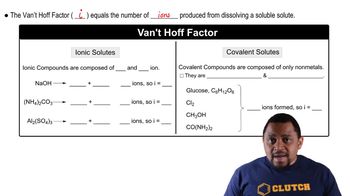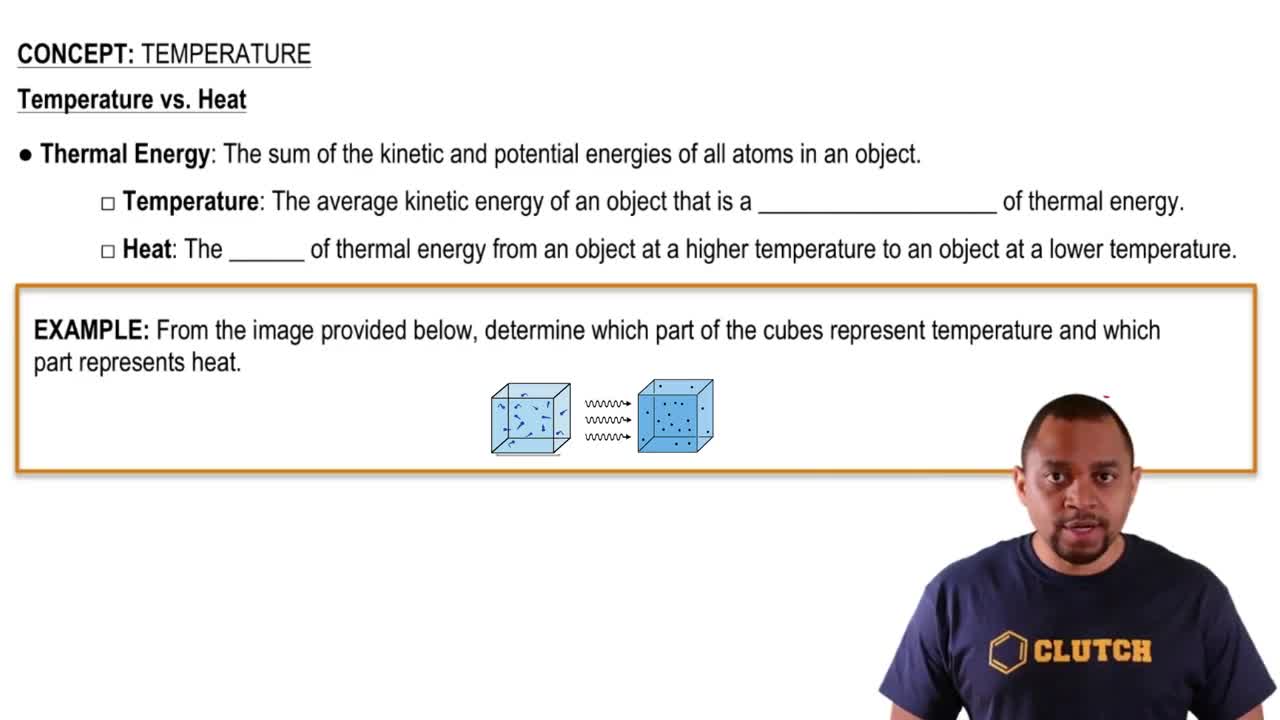Here are the essential concepts you must grasp in order to answer the question correctly.
Osmotic Pressure
Osmotic pressure is the pressure required to prevent the flow of solvent into a solution through a semipermeable membrane. It is directly proportional to the concentration of solute particles in the solution, as described by the formula π = iCRT, where π is osmotic pressure, i is the van 't Hoff factor (number of particles the solute dissociates into), C is the molarity of the solution, R is the ideal gas constant, and T is the temperature in Kelvin.
Recommended video:
Van 't Hoff Factor (i)
The van 't Hoff factor (i) indicates the number of particles into which a solute dissociates in solution. For example, NaCl dissociates into two ions (Na⁺ and Cl⁻), so its van 't Hoff factor is 2. Understanding this factor is crucial for calculating osmotic pressure, as it affects the effective concentration of solute particles in the solution.
Recommended video:
Molarity and Temperature
Molarity (C) is defined as the number of moles of solute per liter of solution. It is essential to calculate the concentration of the solute in the given volume of solution. Additionally, temperature affects the osmotic pressure, as it is included in the formula (T in Kelvin). Therefore, converting Celsius to Kelvin and accurately determining molarity are key steps in solving osmotic pressure problems.
Recommended video:




